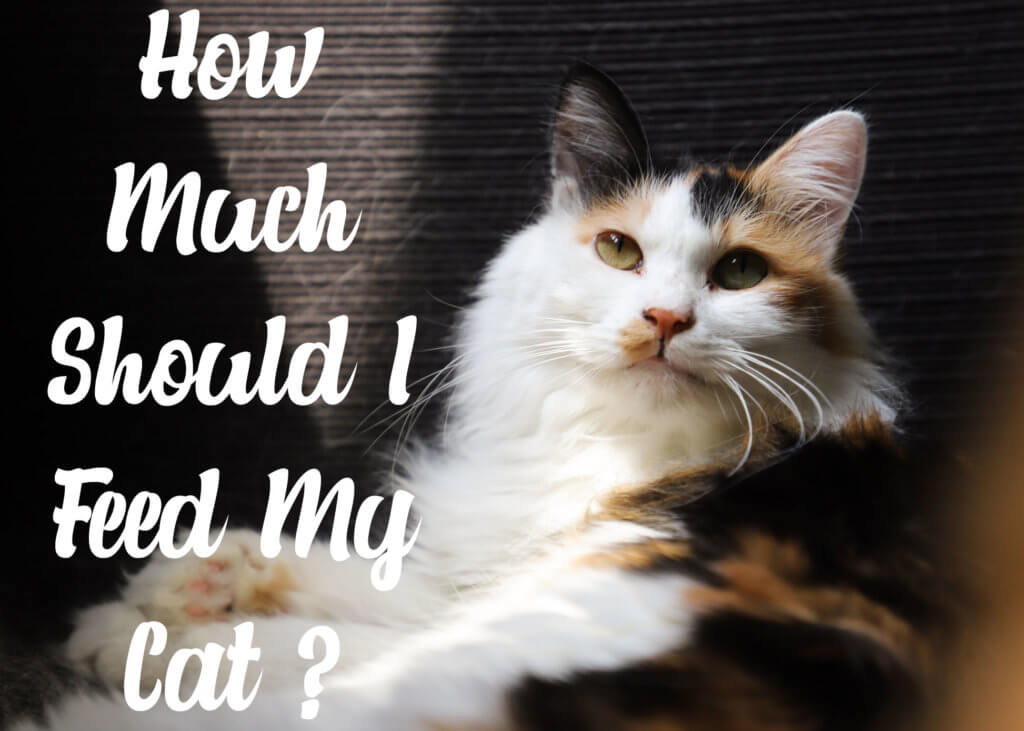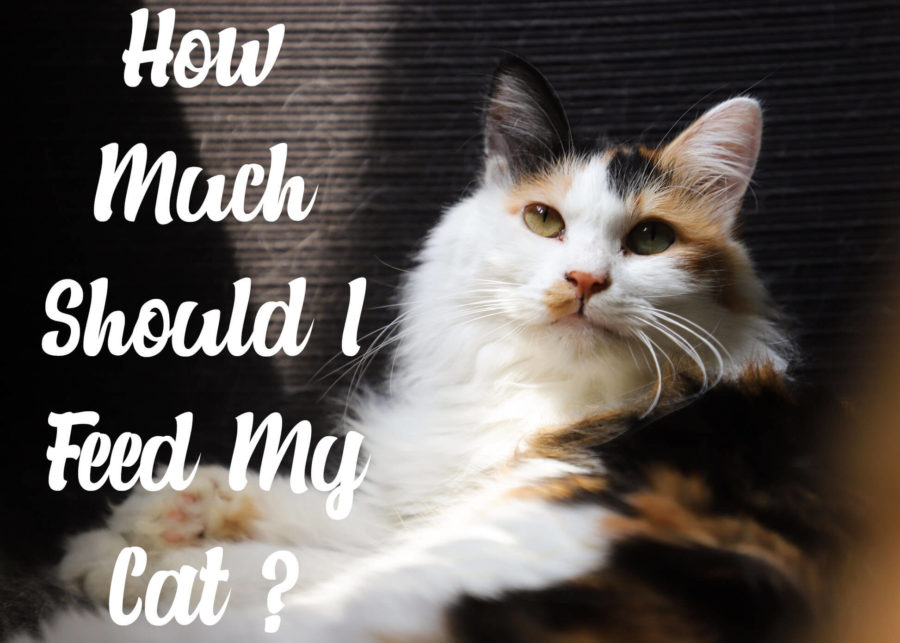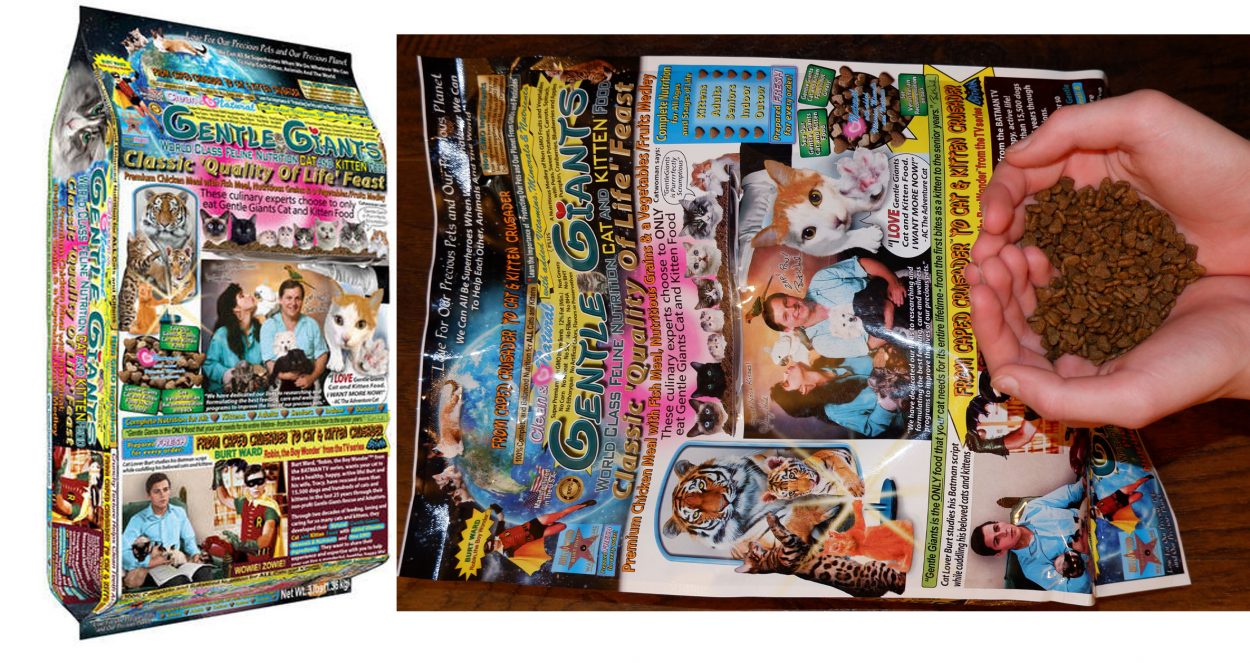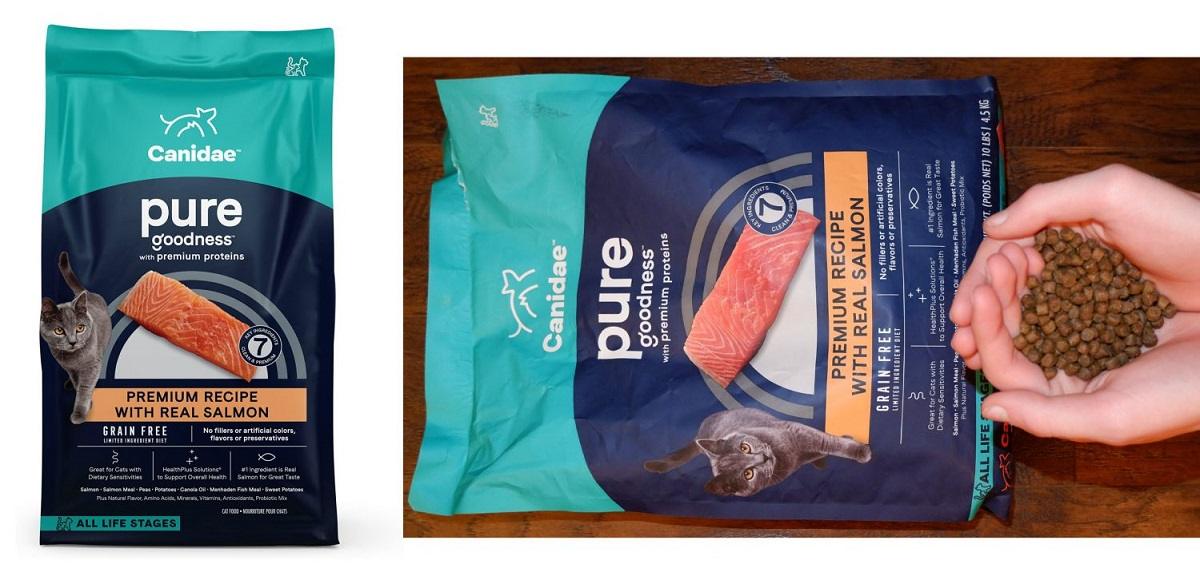How Much Should I Feed My Cat
This page contains affiliate links. We may earn money or products from the companies mentioned in this post through our independently chosen links, which earn us a commission. Learn More

If you are a first time cat owner or have recently noticed your cat is getting a little pudgy, you maybe asking “how much should feed my cat?” Determining the amount that you should be feeding your cat is not complicated. It is based on a number of variables, including your cat’s age and weight, whether your cat eats dry or wet food, whether the cat is pregnant as well as your cat’s general activity level.
There are so many varieties of cat food available on the market today. If you feed your cat the wrong kind of food, he will not maintain good health or weight. A high-quality cat food will contain more nutrients and protein, which in turn means your cat is likely to require less as a result.
Daily Average
The acceptable calorie intake per pound varies greatly. The following serves as a good starting point:
- 50 calories per pound for an outdoor and extremely active cat.
- 35 calories per pound of body weight for active cats.
- 15 calories per pound of body weight for inactive indoor cats.
The average cat requires around 20 calories per pound. But remember, dry foods normally have 300 to 500 calories per cup while canned foods have much less (180 to 220 calories per 5.5 ounce can). An average adult cat requires one 5.5 ounce can of cat food per day.
Nutritional Content
All of the guidelines above are based on feeding your cat a quality cat food that has the right balance of carbohydrates, fats, and protein. Like humans, cats use fats and proteins far more efficiently than carbohydrates. Dry cat food has high levels of carbohydrates, which translates to lots of empty calories. Cats were not designed to digest carbohydrates, so less the better.
In an ideal world, you should feed your cat wet food or a raw cat food diet. But, if you choose to feed your cat dry food for convenience or budget, be sure that you are still providing a balance or wet and dry.
The Age Of Your Cat
Kittens require more food per pound of body weight than adult cats. They need to support their growth and should, therefore, be fed more often throughout the day. Kittens that are up to 6 months old require at least three meals a day. From 7 months to maturity, most cats will do well with just two meals per day.
Once your cat reaches 1 year of age, you can reduce feeding to once or twice a day. Senior cats, age 7 and older, should maintain the same feeding regime. Dr. Francis Kallfelz, of Cornell University College of Veterinary Medicine, says that it is okay to feed a cat once a day when it reaches adulthood as long as it is healthy and has no disease that calls for a specialized feeding program.
What Type Of Cat Food?
Many cat owners feed their cat dry food only. Dry food is less expensive than wet food and is not fresh in any sense. However, if you feed your cat dry food, be sure that you provide him with lots of fresh water to prevent the development of urinary tract blockages. The foundation of a healthy cat diet is protein like meat, fish or poultry. Dry food should be high in animal proteins, and low in plant proteins, because cats are not equipped to digest it. Carbohydrates should make up no more than ten percent of cat food ingredients.
Canned or wet cat food is usually 70% – 80% water which is ideal for cats. Cats are all different, but usually find wet food more palatable and often overindulge if allowed. The most important thing is that your cat’s calorie intake is met in the freshest and most natural way. Wet food is high in protein, low in carbohydrates and can be low on fat. Wet foods should consist predominantly of meat protein with as few by-products and fillers as possible.
Feeding Mistakes
Too much food – Probably the most common mistake people make when feeding their cat is over-feeding. Obesity is the most common nutritional disease seen in cats and is associated with cat health issues such as diabetes, arthritis, and urinary tract disease. The issues isn’t always over feeding but cats are more sedentary, as compared to the days when they were active barn cats. Today their nutrition needs are much lower, so it’s easy to overfeed them.
Feeding dry food only – As it turns out, today’s domestic tabby evolved from desert-dwelling ancestors, a heritage that no doubt left our furry felines with their hunting prowess and low thirst drive. Cats don’t voluntarily drink water like a dog would and because cats naturally produce highly concentrated urine they are guaranteed to have urinary tract problems when their diet is low in liquids. Cats are designed to get their water from their food. Mice, a cat’s normal food, are about 70% water, and canned food about 78%, while dry food is between 5%-10% water. That’s why wet food does a much better job of keeping your cat well-hydrated.
Not enough water – Clearly water is vital, for cats as well as people. Essential to life, water accounts for 60% to 70% of an adult cat’s body weight. A serious water deficiency can have critical repercussions for cats, causing serious illness or death. Although wet foods can go far toward meeting your cats water needs, he should also have several sources of fresh water available through out the house. Some cats prefer running water while others can detect the taste of chlorine in tap water so you might want to buy bottled water for them.
Vegetarian or vegan diet – According to some vets, another popular mistake made when feeding cats is trying to convert cats to vegetarians or vegan diets. Cats are obligate carnivores, meaning they must eat mainly meat and animal organs to thrive. The amino acid taurine, for example, is found only in animal tissue. Lack of taurine can lead to heart problems, blindness, and even death.
Conclusion
You will need to monitor your cat’s diet throughout his life to accommodate his changing dietary and metabolism needs. A good rule of thumb is to feel your cat’s ribs and backbone. If his backbone and ribs show through the skin, then he is too thin. If you can not feel his backbone or ribs, then it is likely that he is overweight. Keeping your cat fit and is much easier than forcing an over weight cat to cut their portion size or stay on a diet. Regularly take your cat to the veterinarian and they will advise you on any issues relating to the weight of your cat.



